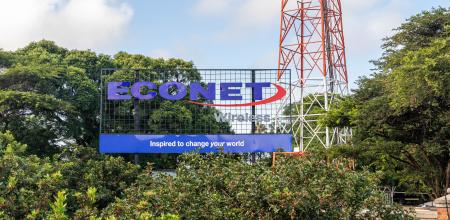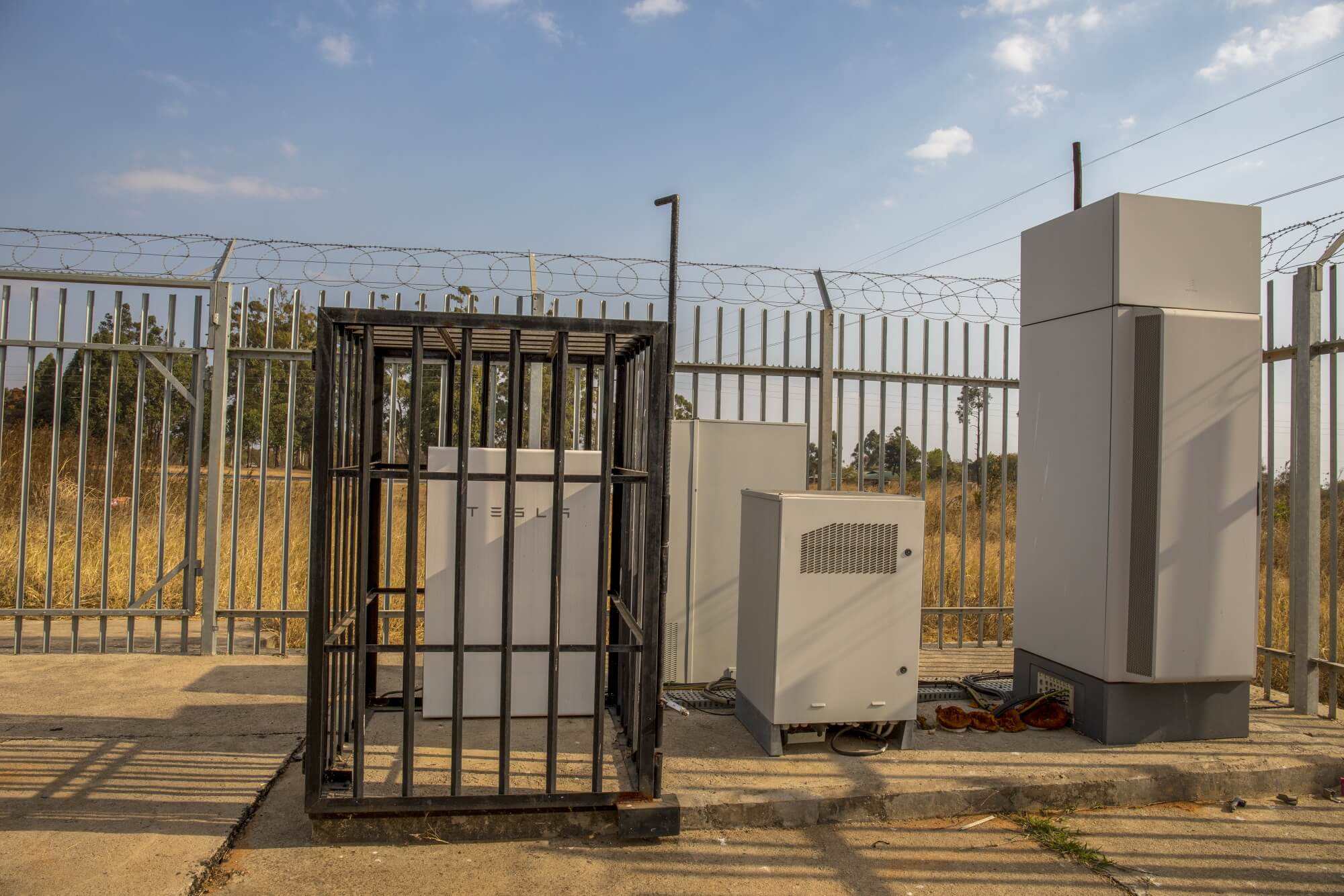
Ok so let’s talk about this. The truth is that the 5G rollout by Econet has not been ideal. It’s been there since around May last year but almost no one has been able to connect to it. Funny story actually, In April last year I sold my iPhone Xs Max and my Huawei P30 Pro so that I could buy a Huawei Mate 40 Pro. The biggest motivator was to be one of the first Zimbos to test out 5G using this phone. And also that the Mate 40 Pro supports all 5G modes so whatever 5G Econet was going to be using, that phone would support it. Well, I only got access to 5G this week. There is a lot to talk about.
5G is currently under testing countrywide
5G in Zimbabwe is currently under testing and this is both on the end of the Regulator as well as the MNOs which means just Econet for the time being. So let’s break this down.
POTRAZ owns the waves
All wireless communication makes use of a wireless signal to connect different devices to each other or to the wireless network. These wireless signals are within a band of frequencies which is limited. There is an upper and lower limit to where wireless signals can operate.
So as with anything that is scarce, some regulation is required to ensure that the limited frequencies are managed well and the spectrum is organized. That is where POTRAZ comes in. They keep tabs on all the occupied and all the vacant frequencies for all wireless communication that exists in Zimbabwe.
You may have heard of news in the USA where they recently switched off the last of their 3G network countrywide and are now exclusively running on 4G and 5G. And in South Africa, they are planning on doing the same by 2025. Part of the reason is that our current connectivity expectations cannot be met by 2G and 3G anymore. I mean which one of you here is happy using 2G or 3G?
The biggest factor is the finite nature of bandwidth which requires us to reuse this spectrum. So if communication technologies become obsolete then they are taken down and the spectrum they occupy is freed and can be allocated to new technologies. The same way you remove old furniture in your living room to create space for new furniture because the size of the living room is the same and can’t be changed.
So Econet, NetOne, and Telecel cannot just plug in their 5G antennas and go live. These airwaves are quite limited and are also shared with other forms of wireless comms like TV broadcasts and Radio channels. And POTRAZ as the regulator knows who is using which frequencies and which ones are free and for what purpose.
Since spectrum is tight in Zimbabwe, POTRAZ placed 5G under a Proof Of Concept and because Econet is always very eager to play with the latest tech, they were the ones that pushed to spearhead this proof of concept. But the rollout is very limited at the moment. And I will speculate a bit here as to why it’s limited.
5G equipment is very expensive so it’s a massive investment that any MNO will be committing to making it available. So their pace with rollout will be dependent on how much disposable income they have which is not much when looking at some of their financials. The spectrum MNOs have access to is finite and can only be increased after purchasing it on auction from POTRAZ. So some Tetris is going to need to be done where MNOs take down some 2G and 3G towers of their own and redistribute the spectrum they recovered from that to new 5G towers. And lastly, if they cannot sacrifice any towers then they wait patiently to hear from POTRAZ if they have any free spectrum lying around that they can auction off to MNOs. Just my bit of speculation there.
Econet owns access to its services
All that was on the Regulator side of things. There is also the Econet component. Whenever a network operator releases a new communication technology, they have to ensure that the network supports the devices connecting to it. So when 5G was launched by Econet, it was not working on 5G capable iPhones and some 5G capable Samsungs. It seems at the time only 5G-capable Tecno, Xiaomi, and Huawei devices were supported out of the box. During the live demos, the Econet engineers were actually using Huawei P40 Pro smartphones.
Econet finished testing with iPhones and when iOS 16 was announced, the 5G option in the network settings was enabled on 5G-capable iPhones. Econet is also almost done with Samsung tests so expect an announcement soon. I have only managed to test 5G on a Huawei device and I am yet to test it on other devices. We will talk about the speeds soon so stick around just a bit more.
All this time I was stuck on 4G and very unsure of why I am unable to connect to 5G on any of the 22 sites listed by Econet. And I am sure a lot of you with 5G smartphones had the same worry. A friend of mine who bought his iPhone 13 Pro from Solution Centre even wondered if he was sold a fake. I even have a colleague who wrote a piece and mentioned that Econet’s 5G is a no-show. And these comments are quite fair because the public was not informed by Econet on the procedure involved in getting 5G to work on 5G-capable devices.
The way Econet is handling 5G is similar to the days of Econet 3G and NetOne LTE sim cards. At the time, for you to be able to enjoy 3G on Econet or LTE on NetOne, you had to get a new Sim card. With Econet’s 5G, almost every subscriber’s account has 5G provisioning disabled. For it to be enabled you will need to get in contact with Econet directly. And not even over Twitter because the response I got there was that if my phone is capable of 5G connectivity it will automatically connect.
I think a lot of people I know with 5G-enabled smartphones will not agree with that. But also, I was able to connect to 5G with a Tecno without reaching out to Econet so there may be some devices in the wild that are connecting to 5G right now. However, a majority can’t access it.
Probably Econet’s support team, marketing team, and engineering team need to work together to provide communication to their customers that brings a lot more clarity on how to get 5G active on their devices. Because if it took me over a year to get access to it then there is no hope for plenty of other people out there.
Again jumping into a speculation zone, probably it’s by design. So the fewer the concentration of 5G users per 5G site, the better the speeds so the few that can access the 5G will be advocates of Econet on how brutally fast their 5G is. Another is that since they are not yet done running network tests with some big brands, they want a stable and uncongested 5G network to do thorough testing. Or maybe someone simply forgot to push the on button for 5G on the network.
Speculation aside, I was only able to get 5G provisioned on my Econet line after I had directly reached out to Econet. Access that most of you reading this may not be able to obtain. So Econet still needs to be pretty clear with its customers about the process of getting 5G provisioned on our 5G-enabled smartphones.
The speed debate
I ran speed tests for Econet’s 5G in Harare’s CBD and posted the results on Twitter. And many of you were, let’s say concerned about the speeds. So let’s talk about it. Data rates or speeds are depicted in 2 main forms. You have Mbps (which is megabits per second) and MBps or Megabytes per second. These 2 are VERY different. One Byte contains 8 bits. So theoretically MBps is 8 times more volume than Mbps.
Now all this doesn’t really matter because MNOs, ISPs, and networking engineers all use bits and not bytes. So even 5G promotional material will use the bit nomenclature and not the byte so for those keyboard warriors seeking uniformity, we are going to be using bits for internet speed.
Now that housekeeping is done, let’s have a conversation on speeds. We have seen promotional material for 5G, the technology, and not Econet. Some material puts figures of around 10 gigabits per second download speeds. These are theoretical figures based on the design of the technology.
Next up we have laboratory tests. So in a controlled environment, a 5G smartphone and a 5G antenna are put in a room and some speed tests are run. These are barely getting to 2Gbps and in the real world, the highest download speeds are even lower around 1Gbps.
These are global figures and not Zim figures. When I tested 5G on MTN in South Africa the highest speed I got was 341Mbps. During the 2022 FIFA world cup, 5G download speeds in the stadiums were capped at 240Mbps. And according to a study done by Ookla, the global average 5G speeds were 168Mbps. Now the 266Mbps I managed to get on Econet is higher than what FIFA fans were getting in Qatar, and around 100Mbps faster than the global average. The promo material promises MUCH faster speeds but in the real world, the 5G speeds we are getting from Econet are pretty much the standard globally.
So as it stands that’s how 5G is looking in Zimbabwe. I did talk about the very interesting future 5G promises like our phones directly connecting to satellites in space. So don’t discount it just yet.-techzim

